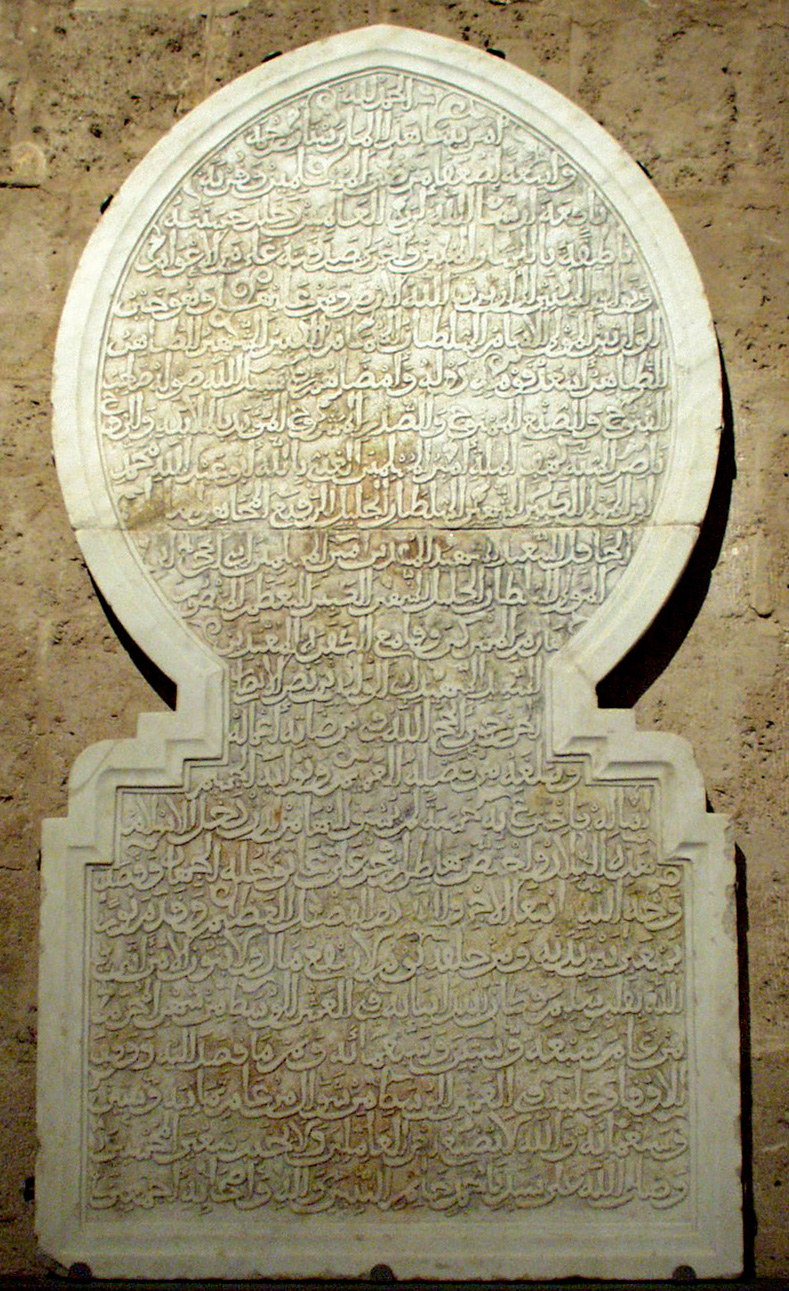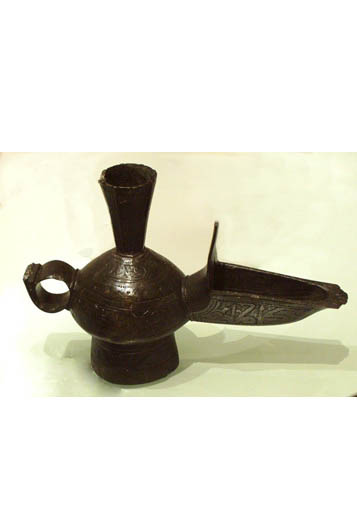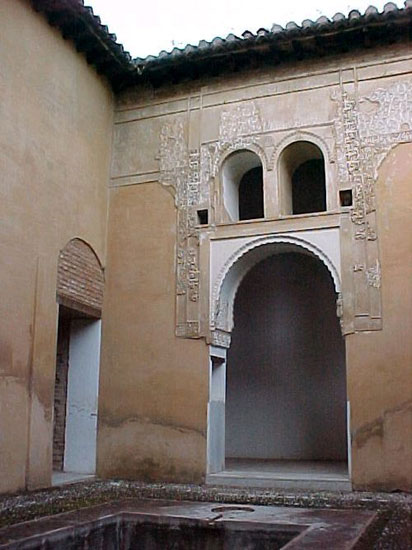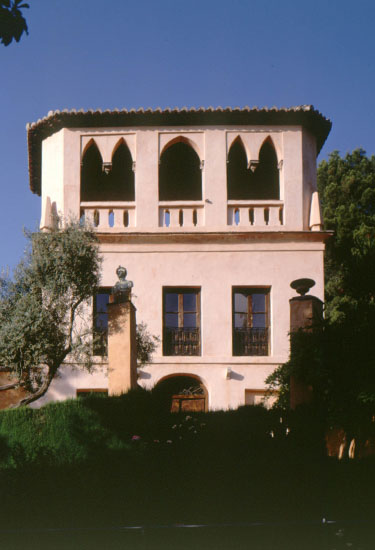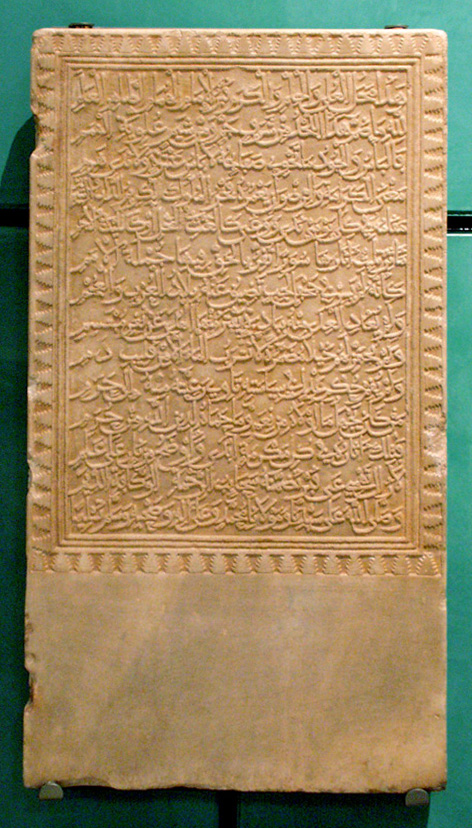GLASS IN THE MUSEUM OF THE ALHAMBRA
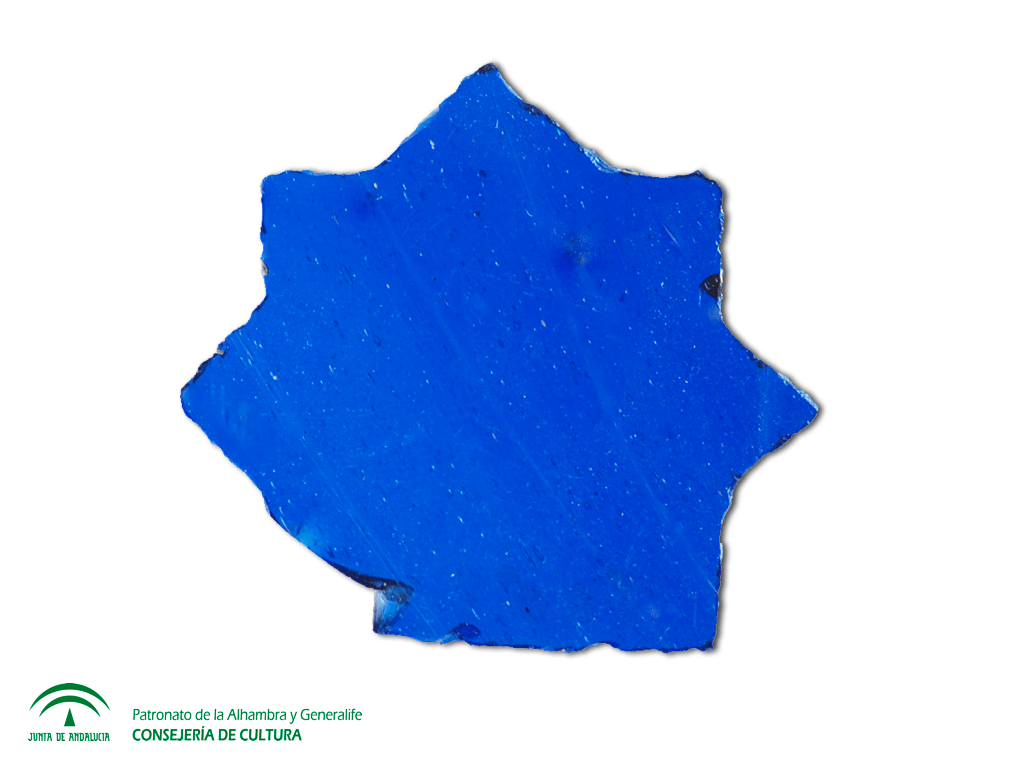
Ms Isabel Cambil Campaña
The glass pieces on display in the Museum of the Alhambra include a selection of architectural glass from the Nasrid era. The term architectural glass refers to all kinds of glass used to close the apertures or window spaces in buildings. Little research has so far been done on this glass in that the only surviving example conserved in situ is the attractive ceiling of the Balcony of Lindaraja, recently restored by the Council of the Alhambra. However there are other glass pieces that tend to go unnoticed, such as the fragments dating from the Early Modern period at the entrance to the Hall of the Ship covering the three paneled windows. From the 16th century onwards as happened with the other decorative features in the palaces (plasterwork, tile work), the Alhambra’s glasswork also underwent a series of restorations and even transformations in response to both decay and changes in fashion or taste.
Some fragments of these glass pieces from the Early Modern period survive in the museum collection. The Alhambra archives also contain documents about glasswork, which detail the works of important master glaziers who worked in the monument from the 16th century onwards.
In the reconstructions of other materials carried out since the time of the first Christian rulers of the Alhambra, King Ferdinand and Queen Isabella, a series of “restoration” jobs have been performed. These sought to conserve the work carried out in the Nasrid era respecting the original to a greater or lesser extent. However in the case of glass pieces there has been no continuity between the work carried out in the Nasrid era and subsequent restoration and replacement.
This talk will be transmitted live on the Periscope application for smartphones and tablets on 28 November
Time: Saturdays at 12 o’clock
Place: Room VII, Museum of the Alhambra, Palace of Charles V.





 Contact
Contact






